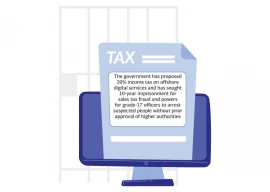
Poverty remains a persistent challenge in some of the world’s most remote mountain regions in Asia. Limited economic opportunities still characterise sparsely populated communities on the Tibetan plateau, as well as Himalayan villages that Edmund Hillary and Tenzing Norgay Sherpa once passed en route to the first successful ascent of Mount Everest.
In Pakistan, according to an ICIMOD analysis, poverty rates are significantly higher in rural mountain areas. The three divisions of Makran, Kalat and Zhob were reportedly considerably worse off, with Kalat and Zhob having at one point almost twice the proportion of households living below the poverty level as the mountain average. The reality remains that while government has been the key driver in putting a man on the moon, it is the private sector that is key to sustainable economic growth, job creation and poverty reduction. That is as true in the plains and lowlands of Asia, as it will be in its remotest mountain regions, typically home to indigenous peoples and characterised by inaccessibility and fragile agricultural ecosystems. To address this, business, government and civil society must come together and move beyond the politics, stereotypes and animosity that have for too long divided the region. Steps must also be taken to address the ‘little bric’ constraints to growth of bureaucracy, regulation, interventionism and corruption.
At the recent ICIMOD conference, I joined with several business and chamber of commerce counterparts on a panel moderated by CSR Asia. Together, we outlined three important areas that must be addressed to spur private sector engagement in Asia’s remote mountain regions. The first is innovation. The private sector is often ready to explore partnerships, but joint activities and plans for engagement must be innovative, with a business model that is not purely philanthropic, but structured to ensure both end beneficiaries in the community and the private sector can benefit. This will include an assessment of risk and return, something that the private sector is long accustomed to, and which government and civil society should also integrate into their own efforts in increasing accountability for time and money spent.
The second is involvement. Too often, the business community is invited to ‘participate’ in a project or asked to fund a piece of research that already has been outlined and decided. The message is in essence, we want your money, but any other involvement is not welcome lest it ‘taint’ the effort. Instead, the private sector must be engaged early on. An innovative partnership would go beyond business as usual, and involve the private sector in fashioning programmes that also leverage a commercial partner’s market experience and knowledge. Such innovative, involved and engaged partnerships can be to the long-term benefit of both mountain communities and the bottom line. This is critical to success and sustainability of any private sector involvement. One spotlighted example of private sector intervention discussed in Kathmandu was a pilot effort to work with marginalised farmers in South Asia, helping catalyse linkages — just as other programmes have facilitated cooperatives — to share information, improve agricultural products and yields, and ultimately build better supply chains and profits.
The third is impact. For the business community, impact assessment is critical. Unlike government, business depends on past success to fund future successes. Results must be measured to ensure there is rationale for sustained business involvement. The remoteness of mountain communities cannot be an excuse for the lack of financial returns on a business investment. When a pilot programme is brought to the business community for assessment, its impact and scalability must be clear and transparent. Pilot projects help demonstrate that something is possible, but impact assessment is necessary for the business community to decide on scaling up an engagement. Don’t throw good money after bad, as it were. While governments typically drive basic infrastructure investments such as rural electrification and farm-to-market roads, the private sector is well positioned to help mountain communities by providing financing, market linkages, knowledge and other services.
The innovation, involvement and impact of government in a nation’s initial journeys into space are clear and unquestionable in the United States, in Europe and now in Asia. As China sends forth a rover onto the lunar surface, an Indian spacecraft is en route to Mars, and Japan has long launched satellites from a space centre in Kagoshima. But here on earth, and even in space where the private sector has become increasingly involved in commercial satellite launches, it is clear that business can be a powerful partner in any endeavour. This must include the fight against poverty in Hindu Kush-Himalayas. Even as Asia reaches for the stars, let’s not forget the poorest of the poor still at home, in the shadows of Asia’s tallest mountains.
Published in The Express Tribune, December 29th, 2013.
Like Opinion & Editorial on Facebook, follow @ETOpEd on Twitter to receive all updates on all our daily pieces.
COMMENTS (18)
Comments are moderated and generally will be posted if they are on-topic and not abusive.
For more information, please see our Comments FAQ


1737550160-0/BeFunky-collage-(21)1737550160-0-165x106.webp)

1719319701-0/BeFunky-collage-(10)1719319701-0-165x106.webp)








1737452260-0/Gaddafi-stadium-(2)1737452260-0-270x192.webp)





@Lala Gee:
Would people in Pakistan accept China's laws? For example it does not permit fasting during Ramzan, certainly China is unlikely o modify its constitution to give special rights to Muslims as is he case in Pakistani constitution.
@Rex Minor
Pakistan has already given an FTA to China thus opening up its market for Chinese olds. Further China has de facto control over Gilgit Baltistan and will soon have it on Gwadar. So what incremental benefits do you think, it would get in lieu of opening its borders to Pakistan and agreeing to a common currency?
Even with the few Turkic people it has, China has problems. Do you think it wants 180 million more?
@powvow: You do underestimate the potential of the country with 180 million people: A power in the future whose peoples resilience will unfold and correlate with the demands of the 21st century. The country needs structural reforms to improve upon its current output which no doubt is very minimal.
Rex Minor
@Lala gee - "Pakistan must eventually join China in an Union with open borders and common currency"
Pakistan may be dying to join China... but are the Chinese ready to open borders and have common currency with you.? The last thought on the mind of Chinese would be having a common currency with a bunch of counterfeiters and traffickers.
@RealBloch:
I believe the same but you can go to website of any Indian newspaper and see their professionalism and display of civilized language in their comments section. And I believe that Indian trolls somehow know the reality of their bias and fascist media.
I thought there was a lot of jargon and buzz words in the article without conveying anything specif or tangible actions.One gets the impression that it is a an article to favour China and its involvement .
I dare ET moderator to publish my comments.
Mr Chin must think that his article will be read by the peasant nepalese or the hispanic immigrant community of the USA. I would have thought that the ET readers will be interested in industrialisation programs requiring Private investors. Shouldn't Mr Chin be more interested to solve the growing poverty of the USA where the lnes outside the charity houses for food are getting longer by day. What Pakistan needs is the progress in their education system, the nationalisation of its army and a total cultural revolution among its people to bring them to the 21st century level. The potential Investors must support the industrialisation of the country which will create jobs for its citizens. The objective being to reduce the poverty in the country which its neighbour China has been involved in for several decades now.
Rex Minor
@RealBloch: "Cant you have better things in life than Pakistan and Bollywood." +++++++++++++++++++++++++++++++++++++++++++++++++++ Bollywood is all about mindless enetertainment and you imply the same for Pakistan.
Indian troll is at it again. Cant you have better things in life than Pakistan and Bollywood.
@lala jee And Pakistan must be ruled by a Communist Party of Pakistan (Maoist) right? That'll make the merger much easier.
"-----areas that must be addressed to spur private sector engagement in Asia’s remote mountain regions---"
As a person who lives in a remote region of the Indian Himalayas , one would agree that there is a great need for combatting poverty here. The problem with the * PRIVATE SECTOR* is that it works only where it is sure of making huge profits. It is the locals who have to protest against projects that harm the ENVIRONMENT.
What are the priorities of the "private sector" ? Self interest or a genuine desire to bring development to remote mountain-locked areas of the entire GREATER HIMALAYAN region ?
@Nikki: Don't worry. Already some parts of Paki has been sold to China and Saudi Arabia. The rest will be aold in future.
sweet words just to grab more of our resources ... what more can we expect from you..
Love to see the Chinese "love" for Pakistan. I hope you treat them like the underclass in Xinjiang.
Excellent observation By Curtis S Chin.
Yup, Couldn't agree more. But does not all these "Space Racing' indicates that the Policy Makers are more concerned about the reflection of the image rather than the actual portrait?
regards,
Pakistan must eventually join China in an Union with open borders and common currency. We can start with a GSP+ status with China...China should help Pakistan by opening up her markets for us.
Wonderful article : In deed, in South Asian Countries poverty ratio has beein increased tremondously. States are allocating their resoureces in increasing arms race and star race ( poor state of South Asia), on the other hand their people are living in misrable conditions.People pay their taxes direct and indirect to the states so only states are responsible to provide them their bacis facilities under the state constituion.Civil society can create awarness only.